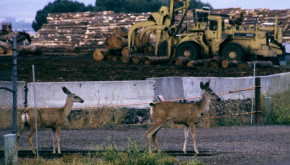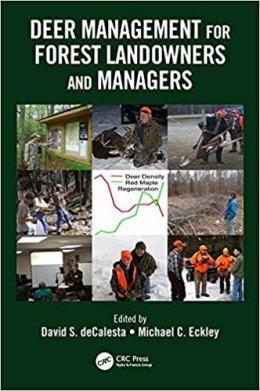
Deer Management for Forest Landowners and Managers is a new book by Daivid S. deCalesta and Michael C. Eckley. It is a technical guide with case studies, illustrations, and stories that can help guide decisions in managing deer populations among many other objectives.
This is the first and only book written for those who manage deer and deer impact on private forestlands such as small woodlots and on public forestlands such as state and/or national forests. It covers the what, the why, the how, the where, the when, the by whom, and the how much and for how long details of deer management on forestlands affected by overabundant deer herds. The book integrates the science of deer biology with human dimension factors of values and culture.
as state and/or national forests. It covers the what, the why, the how, the where, the when, the by whom, and the how much and for how long details of deer management on forestlands affected by overabundant deer herds. The book integrates the science of deer biology with human dimension factors of values and culture.
The book describes deer management at the actual level of management – the individual forested property, whether a small woodlot of perhaps 20 acres or a larger commercial forest operation, state park or national forest encompassing hundreds to thousands of acres.
These forestlands are where negative deer impact affects goals for natural resources and are where managers integrate all aspects of deer management: hunting, management to counter deer impact, habitat manipulation, maintenance of access roads used by hunters, and human dimension factors such as culture and values of hunters and other stakeholders.
The key component of managing deer impacts on forest resources—adaptive management—is described and illustrated by nine case histories spanning a wide range of size, ownership, and natural resource goals.
Chapter 38 offers one such case study. Written by Sue Hamilton and Jeff Hamilton, it describes how the owners of a family forest in Pennsylvania have made decisions about how to manage deer populations in concert with maintaining recreational trails, harvesting timber, and sustaining habitat for a variety of wildlife. The family worked with forestry and wildlife professionals to assess their woodland. They devised a broad plan for reducing deer density and monitoring deer and vegetation to ensure their plan was working. To accomplish the plan, the Hamiltons applied for grant money and carefully balanced the operational costs with the results on their land. Before the end of this chapter, the family looked back and reflected on whether they had meet their initial goals.
For more information on this new book, please visit: www.deer-management-book.com.

